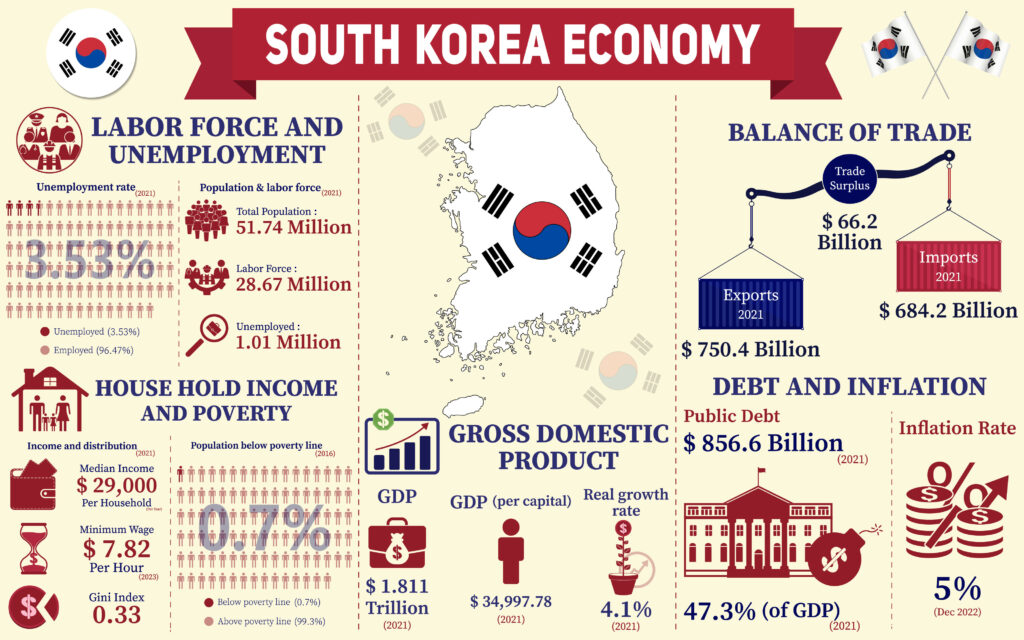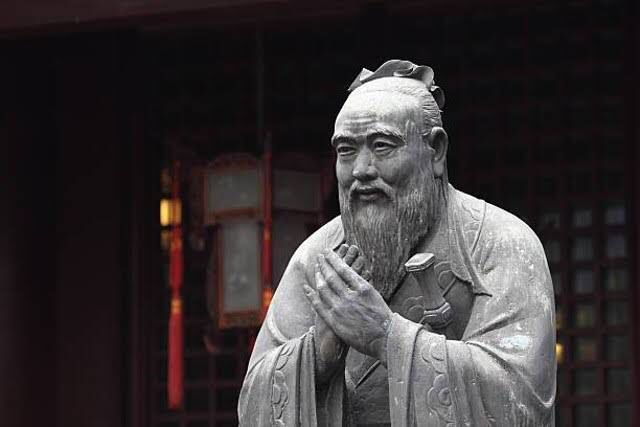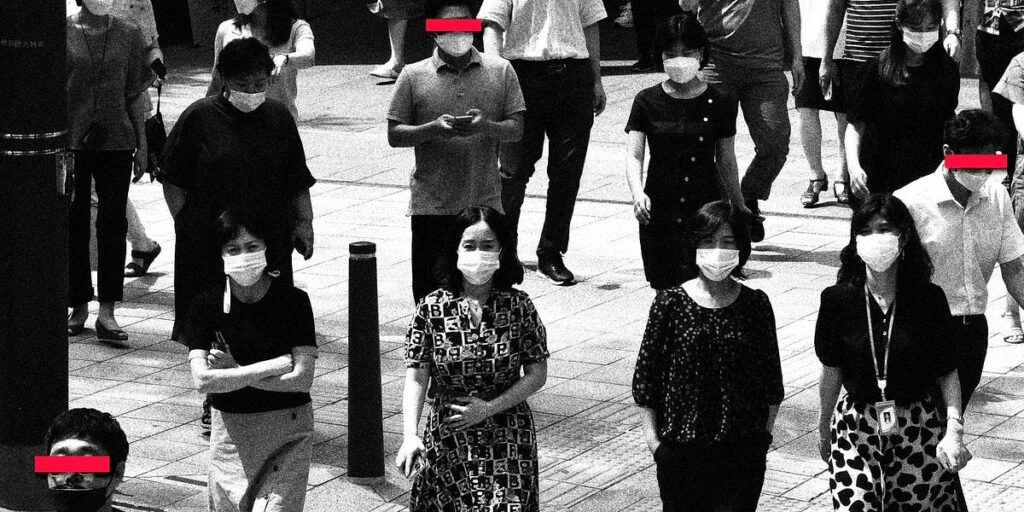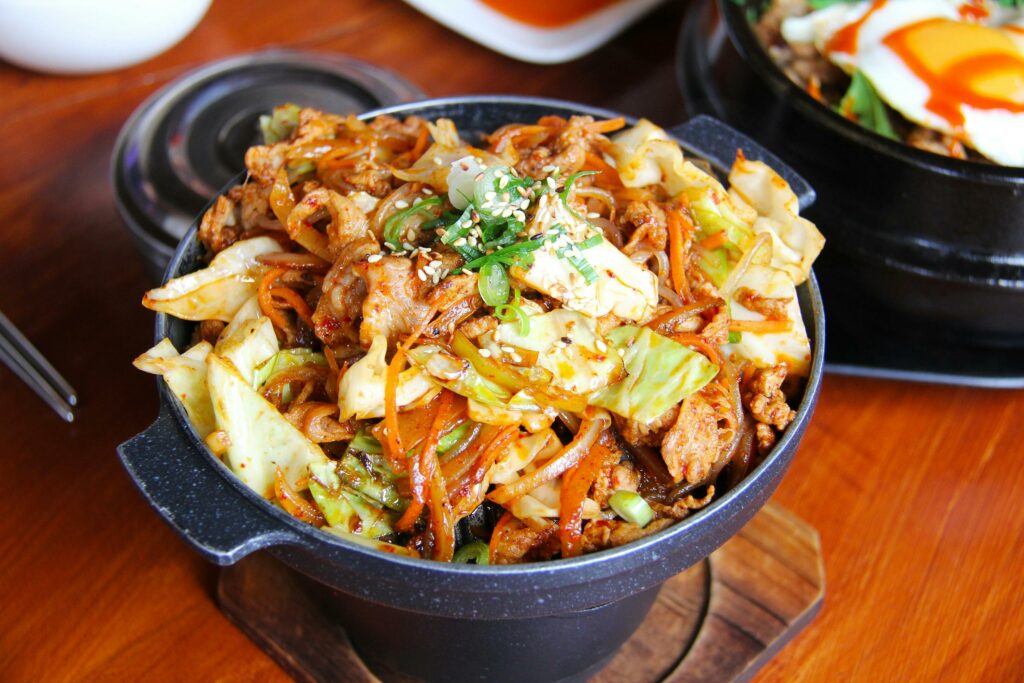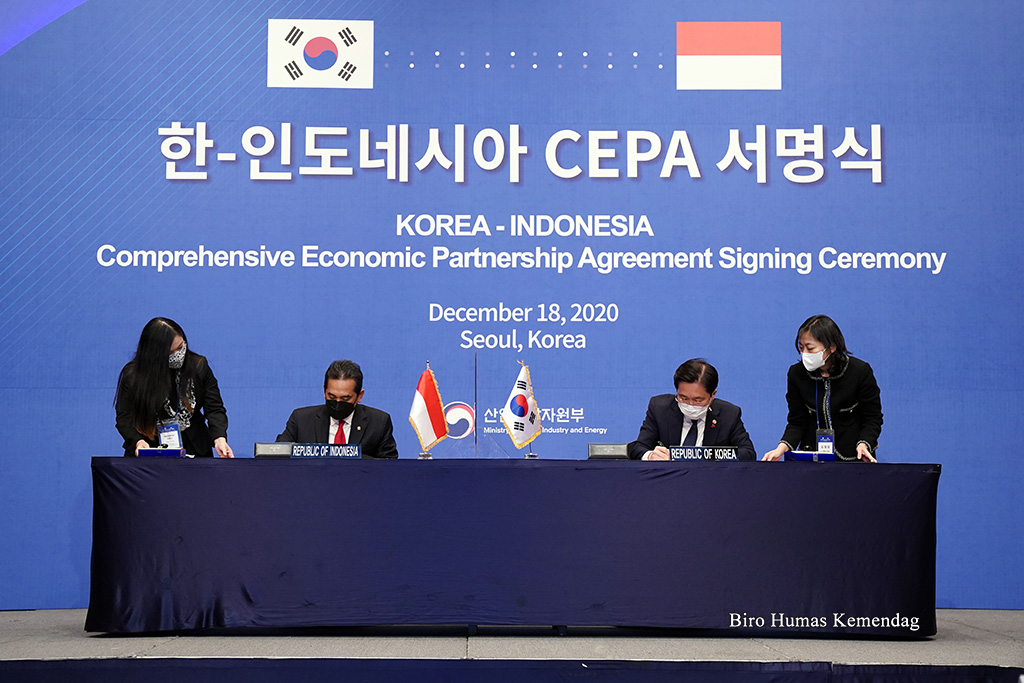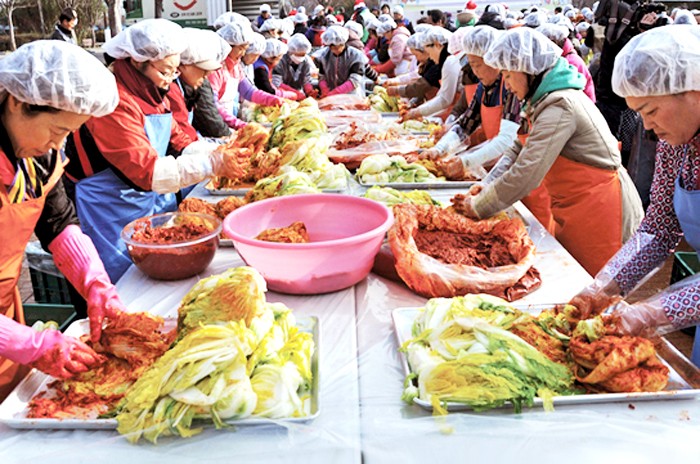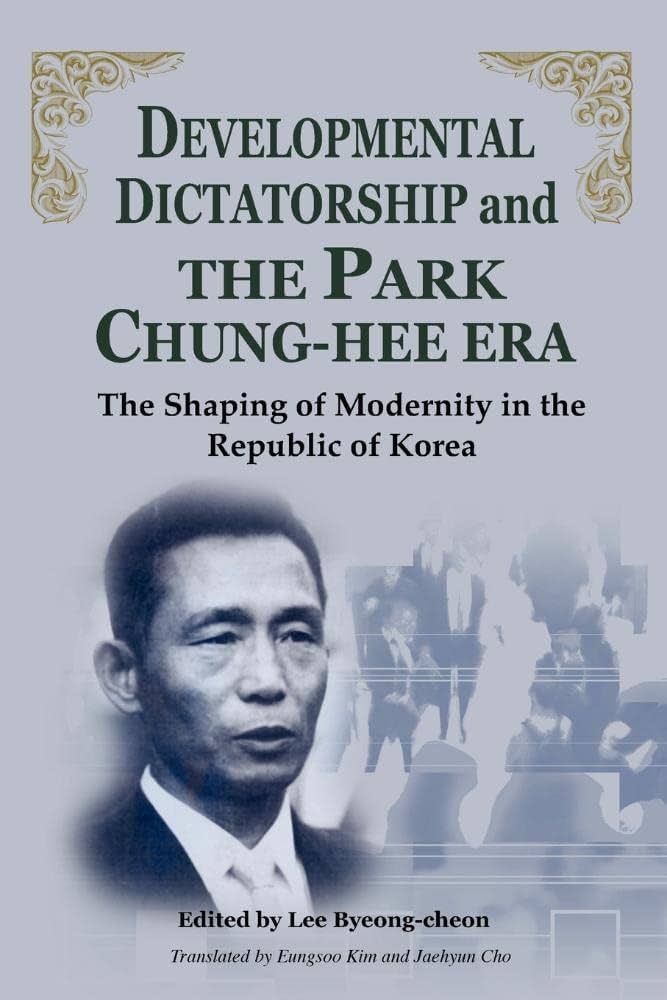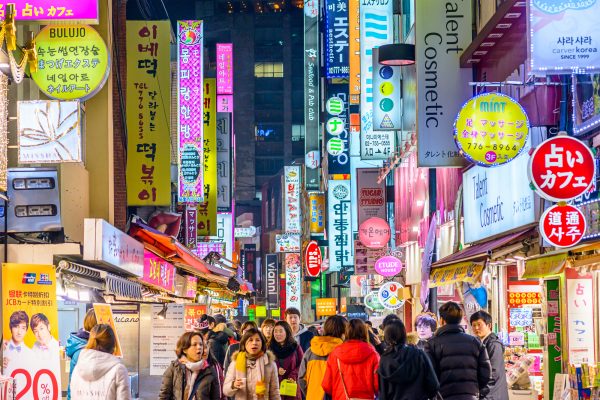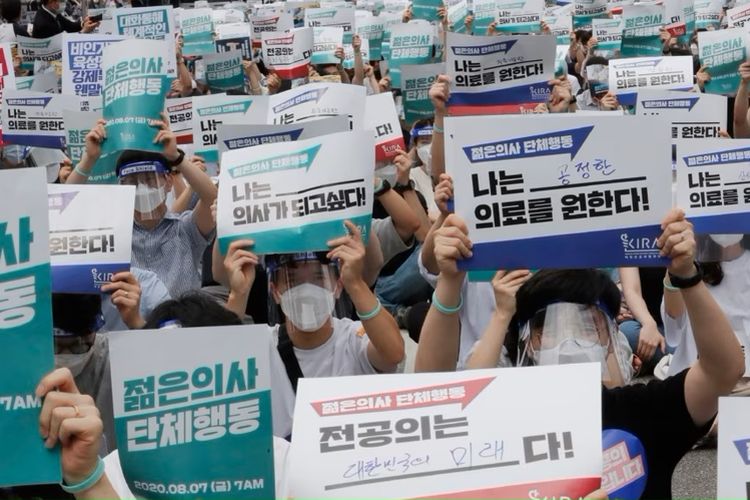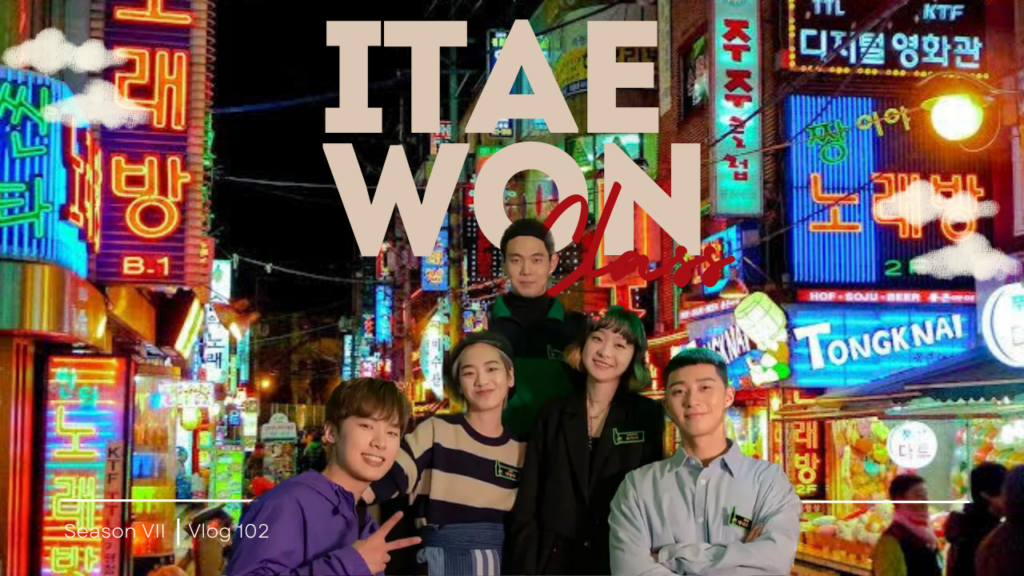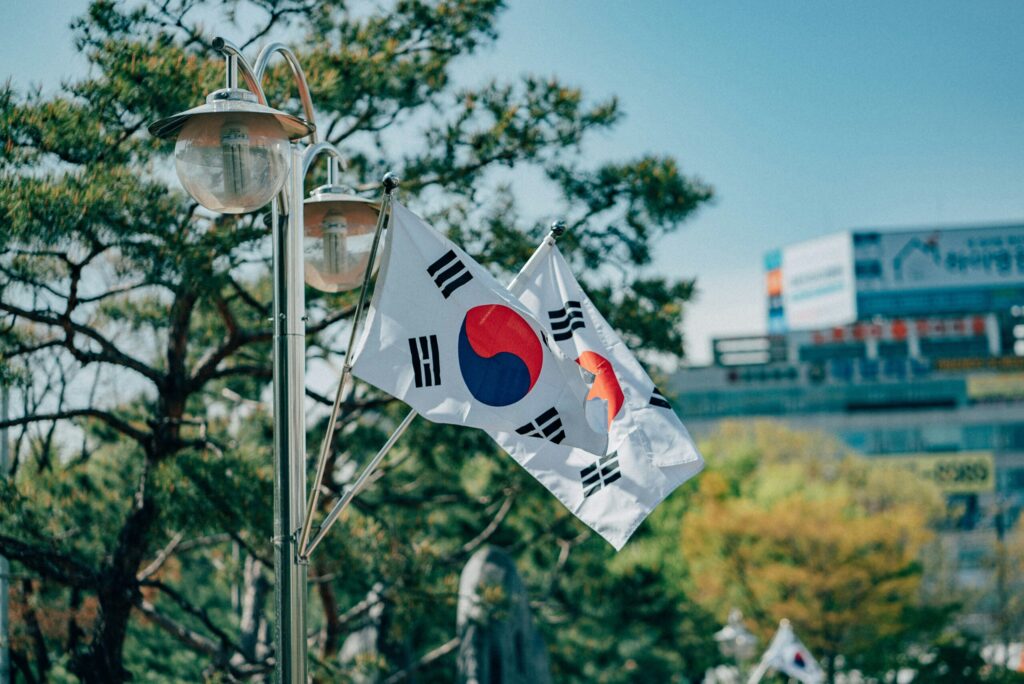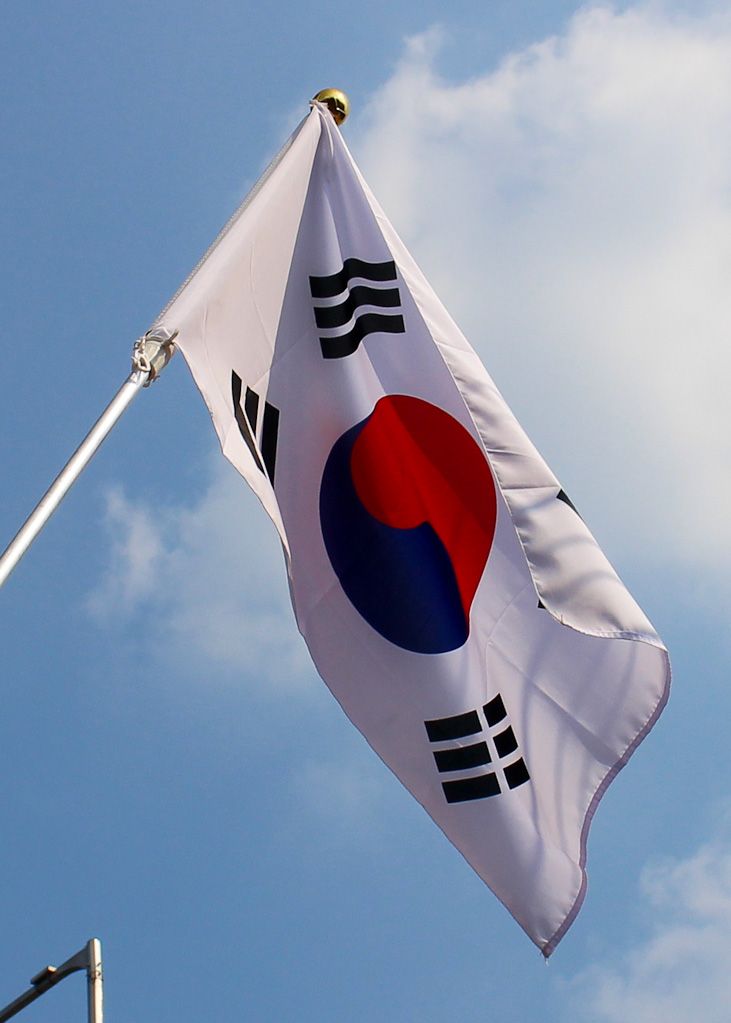South Korea’s Economic Transformation: From War Ruins To A Global Giant
INTRODUCTION
South Korea has undergone an extraordinary transformation in its economic development since the end of the Korean War in 1953. In less than a generation, the country has transitioned from one of the poorest in the world to one of the most advanced and dynamic economies. Government-led industrialization strategies, significant investments in education and technology, and openness to international trade have played key roles in driving rapid economic growth. Through these policies, South Korea has successfully built competitive manufacturing industries, such as electronics, automotive, and shipbuilding, which now serve as the main pillars of its economy.
The economic development of South Korea has also been marked by the significant role of chaebols, which are large family-owned business conglomerates that dominate various economic sectors. Companies like Samsung, Hyundai, and LG have not only played a crucial role in building the domestic economy but have also positioned South Korea as a major player on the global economic stage. The success of these chaebols is closely tied to government support, which has provided incentives and facilities for expansion and innovation. However, the dependency on chaebols also brings its own challenges, including issues related to competition, transparency, and wealth distribution.
Over the past few decades, South Korea has made efforts to address various challenges in maintaining the sustainability of its economic growth. Structural reforms in various sectors, economic diversification, and enhancing competitiveness in technology and innovation have been the primary focus of the government. Additionally, efforts to address social and environmental disparities have increased alongside the awareness of the importance of inclusive and sustainable development. With all these efforts, South Korea continues to strive to maintain its position as one of the world’s leading economies and to serve as a model for other developing countries.
DISCUSSION
South Korea’s economic development is the result of a highly planned and directed industrialization strategy by the government. After the Korean War, the government adopted an economic policy focused on exports, promoting the growth of heavy and chemical industries as key sectors. Massive investments in infrastructure and education were also made to support
industrialization. During the period from the 1960s to the 1980s, the government collaborated with the private sector to create a conducive environment for economic growth. Fiscal incentives, subsidies, and protection for new industries allowed them to grow rapidly and compete in international markets.
The role of chaebols in South Korea’s economic development cannot be overlooked. Chaebols, such as Samsung and Hyundai, received significant support from the government, including access to cheap credit and market protection. Their vertically integrated management structure allowed chaebols to control entire supply chains, accelerating innovation and production efficiency. However, the dominance of chaebols also created problems such as monopolies and a lack of healthy competition. Efforts to reform and break the power of chaebols, while increasing transparency and corporate governance, have been important government agendas in recent decades.
On the other hand, new challenges have emerged with South Korea’s economic development. Dependence on exports makes the South Korean economy vulnerable to global market fluctuations. The Asian financial crisis in 1997 was a turning point, forcing South Korea to undertake major economic restructuring. Economic diversification became a necessity to reduce risk and increase stability. New sectors such as information technology, biotechnology, and renewable energy began to develop.
Additionally, the government has increased its focus on social issues such as income inequality and unemployment, as well as environmental challenges like pollution and climate change. This more inclusive and sustainable approach aims to ensure that South Korea’s economic growth is not only strong in numbers but also has a positive impact on all segments of society and future generations.
CONCLUSION
Overall, South Korea’s economic development is an extraordinary success story, driven by visionary government policies, the dominant role of chaebols, and a commitment to education and innovation. Despite facing various challenges, including dependency on exports and chaebol dominance, South Korea has successfully diversified its economy and focused on social and environmental issues to ensure sustainable growth. The transformation from a poor post-war nation to one of the world’s most advanced economies demonstrates the country’s resilience and adaptability, making it an inspirational model for many other developing countries.
REFERENCES
Kang, D. H. (2010). Perekonomian Korea Selatan: Sejarah dan Perkembangan. Jakarta: Pustaka Ilmu.
Lee, J. W. (2012). Dinamika Industrialisasi di Korea Selatan. Bandung: Mizan Media Utama. Kim, S. H. (2015). Peran Chaebol dalam Ekonomi Korea Selatan. Yogyakarta: Gadjah Mada
University Press.
Park, J. K. (2017). Strategi Ekonomi Korea Selatan Pasca Krisis 1997. Surabaya: Airlangga
University Press.
Choi, Y. H. (2019). Diversifikasi Ekonomi di Korea Selatan. Depok: UI Press.
Yun, M. S. (2021). Kebijakan Ekonomi Korea Selatan: Menuju Pembangunan Berkelanjutan. Jakarta: Gramedia Pustaka Utama.


 Indonesia
Indonesia 